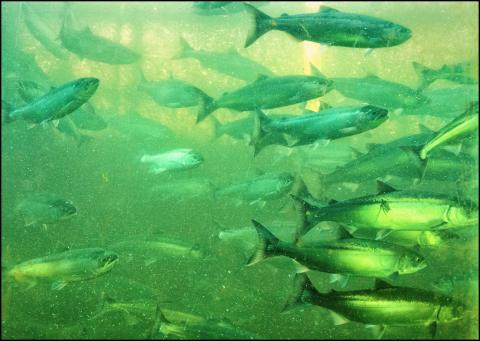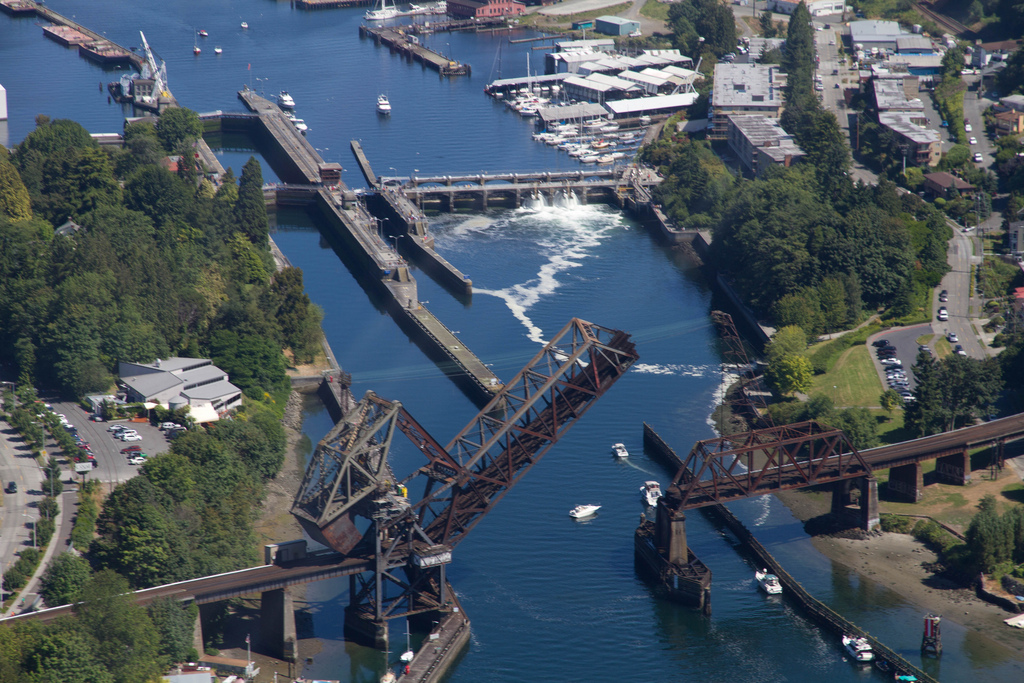
For close to 100 years, Seattle's Ballard Locks has been one of the region's busiest waterways, drawing major boat traffic along with millions of tourists. But as it prepares to celebrate its centennial, the aged structure is also drawing the concern of engineers. They worry that an earthquake could cause the locks to fail, draining massive amounts of water from Lake Washington and Lake Union. In some scenarios, the two lakes could drop by as much as 20 feet, stranding boats, disabling bridges and causing big problems for salmon restoration.

Antique gears, chains and pulleys, up to 100 years old, are still cranking and grinding to maintain operations at Seattle’s Ballard Locks, where 45,000 ships and boats pass through each year from Puget Sound into Lake Union and Lake Washington.
The aging underground equipment, an engineering marvel a century ago, has become obsolete, despite ongoing maintenance, according to locks operators with the Army Corps of Engineers. When the locks were constructed, earthquakes were not much of a consideration. In fact, nobody had any idea that the Puget Sound region would one day be identified as one of the highest-risk regions in the country.
Concerns are growing that an earthquake or major ship accident could cause a failure that would halt ship traffic — or, worse, drop water levels in Lake Washington and Lake Union by up to 20 feet — or more during an extreme low tide.
If the lakes were to drain down more than a few feet, houseboats and fishing boats would be left sitting on the bottom of Lake Union, while thousands of motorists would find their travels slowed or stopped on the two floating bridges that cross Lake Washington.
Aging equipment
The Ballard Locks, formally known as the Hiram M. Chittenden Locks, pass more marine traffic than any similar system in the United States. Completed in 1916 by the Army Corps of Engineers, the locks have long served commercial and recreational vessels going into Lake Union and Lake Washington.
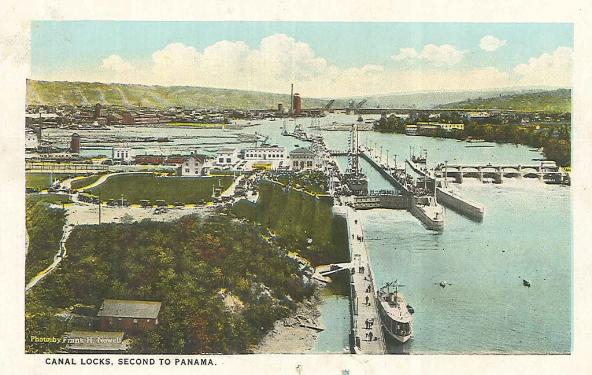
Most of the aging equipment remains the same as it was a century ago. Some mechanical systems have been shut down for safety reasons. Other equipment remains on the verge of breakdown.
Despite the deteriorating conditions, millions of dollars in commerce and recreation rely upon the smooth operations of the locks, and keeping things going can be challenge at times, said Nate McGowan, operations project manager.
“We have some great maintenance people,” McGowan noted. “When things break, they fix it the best they can. They know how to get by.”
Meanwhile, migratory fish — including threatened chinook salmon and steelhead trout — must pass through the locks and the upstream ship canal on their way to spawning areas in and around Lake Washington. The locks impose their own hazards on what is already a perilous journey for salmon — both for the adult fish going into freshwater and their offspring heading back out to sea.
A salmon's journey
Related: Salmon live in a topsy-turvy world upstream of the Ballard Locks
“That bottleneck is critical” said Jason Mulvihill-Kuntz, salmon recovery manager for the Lake Washington/Cedar/Sammamish Watershed, noting that whether salmon make it through depends on daily operations as well as the antique equipment in need of renovation.
“In 2012, the Corps prioritized nine needed repairs,” Mulvihill-Kuntz said. “Our fish-passage needs were represented by three of the nine, but we see the need to address the whole package” because of the sequential order proposed by the Corps.
Hazards under review
Engineers have been expressing various concerns about the locks for decades, but an overall review in 2010 helped bring the issue to a head. Inspectors for the Army Corps of Engineers identified numerous structural and mechanical problems in and around the locks that needed immediate attention. Following their review, they revised the dam-safety ranking from a 4 (“priority”) to a 2 (“urgent”), based on a classification system from 1 to 5, in which 1 represents an imminent risk of failure.
Since then, the agency has taken interim measures to reduce the risks while proceeding with studies to determine future needs. The good news is that the concrete dam, which impounds the lake water, was found to be sitting on a solid footing, and the concrete itself appears to be in “amazing shape,” according to Richard Smith, dam safety officer for the Corps’ Seattle District. Lab tests to precisely measure the strength of the concrete are being planned.
Greater concerns are directed toward:

Were it not for the intensive daily use of the locks, an observer could simply admire the still-functioning antique equipment, dating back to 1915. But now a day of reckoning is drawing near. More and more people — from local Corps personnel to Seattle city officials to Washington’s congressional delegation — recognize that extensive renovation is essential to keep the locks going.
So far, engineers have identified needed repairs that would cost nearly $50 million. With a major centennial celebration planned for next year, those involved would like to report some real progress. Studies are underway to help establish budget priorities through the dam-safety program.
“We are blessed that this place was built so stout, but that is also a curse,” McGowan said. “We probably should have squawked a long time ago. But we are the Army. We suck it up and get it done.”
As renovations are being considered, the federal government remains steadfast in maintaining the historical character of the site and its more than 20 brick and stone buildings, named to the National Register of Historic Places in 1978.
Each year, more than 1.2 million visitors come to observe the boats and ships maneuvering through the locks and to enjoy the Carl S. English Botanical Gardens. When adult salmon are running, visitors can peer through windows of the fish ladder and come face-to-face with the Northwest’s beloved, but troubled, fish.
A transformed ecosystem
The Ballard Locks were originally built to transport cargo, including coal and timber, by ship from areas around Lake Union and Lake Washington. As the area grew, the two lakes became industrial centers with a highly desired freshwater anchorage.
The locks were constructed from 1911 to 1916 on Salmon Bay, a part of Puget Sound. The Lake Washington Ship Canal includes the Fremont Cut, a 1.1-mile-long man-made channel that connects the locks to Lake Union, and the half-mile Montlake Cut, which connects Lake Union to Lake Washington.
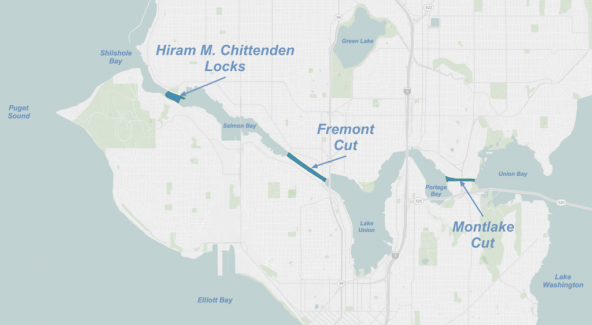
During construction, Lake Washington was lowered 9 feet to the level of Lake Union, which was an average of 21 feet above sea level. Before construction, Lake Washington drained into the Black River, which connected to the Duwamish River near the south end of the lake. After the locks were completed, the Black River essentially dried up, and the nearby Cedar River was diverted into Lake Washington, which began draining through the locks to the north.
Over the past 100 years, returning salmon were able to find a new route through the Ballard Locks and into Lake Washington and its tributary streams, including the Cedar River.
Ancient engineering threatens young salmon
The filling system for the large lock has been called out as a major problem in need of urgent attention. The massive flow comes through a concrete passage, or “culvert,” near the bottom of the lock. That flow is controlled by raising and lowering 14-foot-tall steel doors called Stoney gate valves, originally invented in the 1800s by Irish engineer Bindon B. Stoney.
Those valve doors, which have become seriously corroded, move up and down on rollers that are practically worn out. The drive mechanism involves motors, chains and 'worm' gears (named for their long, screw-like shape). During a pumpout inspection in 2012, one roller was found broken. According to maintenance records, excessive wear and corrosion has been seen in the roller system since at least 1939.
The Stoney gates also create a problem for juvenile salmon moving downstream toward Puget Sound. The small salmon are attracted to the movement of water through the valves — especially during warm periods when they swim deeper to remain in cooler water. Caught in the rushing intake, the tiny salmon are battered and sometimes killed as they slam into the concrete walls of the culvert. Before crews started scraping off the crusty barnacles during annual maintenance, large numbers of fish were essentially shredded as they passed through at high speed.
Engineers have designed a modern hydraulic-driven system for the intake valves. The new design will allow for reduced flows, resulting in less attraction for juvenile salmon. Lower flows will slow the filling of the locks and delay boat movements, but only for a few weeks during the spring salmon migration.
In years past, the large locks could be emptied in about eight hours by using large, permanent pumps located at the bottom of a 60-foot-deep well, McGowan said, as he descended an iron spiral staircase from the basement of the operations building. When he reached the bottom, he pointed to a concrete tunnel running under the large locks and connecting to the small locks.
“That’s an access corridor,” he said. “We have water and power lines running through there.”
All around the bottom of the well were cast-iron pipes, some covered with rust, casting shadows in the dim light. Most pipes are too large to reach around. Many had never been replaced over the past 100 years. One big pipe was embossed with its year of manufacture: 1915.
When the pipes became so corroded from seawater that they were no longer safe, the pumping plant was shut down three years ago. A major concern was that a pipe might burst while someone was deep down in the well. Now, instead of emptying the large locks in eight hours using the large pumps, portable pumps are brought in. That has increased the pumping time from eight to nearly 30 hours under good conditions, leaving the locks out of operation that much longer.

The Corps received funding to remove the old pipes and pumps, and that work is underway. Money to install new equipment has not yet been approved, but the project is included in the president’s budget recently submitted to Congress.
Funding has not yet been provided for the high-priority replacement of the Stoney gate valves. Funding also remains uncertain for nearly a dozen major renovation projects, including these that are ranked high:

Other projects on the list include rehabilitation of the outdated electrical system, restoration of the maintenance building and replacement of old machinery in the small lock.
Congress could approve funding through the Army Corps of Engineers’ operation and maintenance budget for some projects and through the dam-safety budget for others.
The Muckleshoot Tribe has treaty rights to fish in Lake Washington and to work with the state in managing the salmon populations. Priorities for the tribe are a permanent solution for the diffuser well, replacement of the Stoney gate valves and widening the entrance to the fish ladder to help salmon get through at all tide levels.
“The tribe has a long history of trying to get improvements at the locks,” said Holly Coccoli, a biologist for the tribe. “it is very much a priority of the tribe to address fish passage issues. It just has to be done and everyone has to be part of it.”
Analyzing the risk
Traditionally, the Corps has based its operations funding on the weight of cargo passing through the locks each year. That put the Ballard facility at a disadvantage, even though it moves more vessels than any similar facility in the country. Most of the 45,000 vessels that pass through don’t count for much cargo. About two-thirds are recreational boats, while the cargo ships and fishing boats are generally empty as they go in for moorage and repairs. Funding priorities could be changing, however, in consideration of the outmoded equipment at the Ballard Locks.
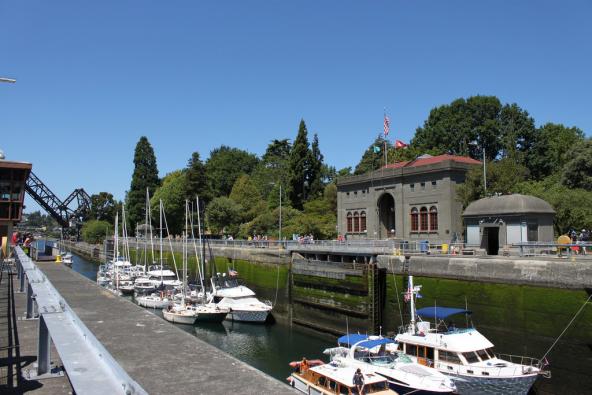
As for dam safety, a group of technical professionals from various branches of the Army Corps of Engineers are scheduled to convene in April for a major analysis of the potential hazards at the Ballard Locks, said Smith. When finished, their report will assign a numerical risk value to the most serious problems,
“They will look at the potential failure modes and examine them in great detail,” Smith said, noting that anticipated ground movement during a major earthquake will be one of the factors considered.
Probabilities will be assigned to each major problem that could occur. A catastrophic failure might require a series of unlikely incidents, making the overall probability exceedingly small, he said. But if the consequences could be a significant loss of life or property, the risk rating could be high.
For example, the upcoming study might conclude that a scenario leading to uncontrolled flows through the locks would be next to impossible. But the consequences of dropping the water levels of Lake Union and Lake Washington by 10 or 20 feet would be severe, as the normal fluctuation is no more than two feet.
As the lakes dropped, hundreds of ships and boats would become grounded in the two lakes. Sewer and electrical lines attached to houseboats could become severed. Fuel terminals could have spills. And the two floating bridges across Lake Washington could be in peril without a quick response.

To keep the bridges in operation as the lake drains, crews would need to keep removing the slack that would develop in the anchor cables, said Rick Rodda, assistant superintendent for bridge maintenance at the Washington Department of Transportation. Those cables must remain tight to keep the bridges from moving from side to side.
“We can keep jacking the cables,” Rodda said. ”There would be humps where the bridge attaches to the fixed portion (on land). There are huge expansion joints at that point that the cars have to drive over. Eventually, we would need to lower the speed limit for safety, but we would be able to keep functioning.”
Smith, the dam-safety officer, said the upcoming safety study will involve economists who can estimate not only the direct costs of failure but also the indirect financial losses caused by disruptions of transportation and commerce.
The Army Corps of Engineers has revised its method of scoring dam safety over the past 10 years, he said. Previously, only the downstream consequences of a failure were considered. For the Ballard Locks, the downstream damage would be minimal. Fortunately, the new approach looks at everything.
“I think we are much more flexible now,” Smith said. “The primary risk driver is still life safety, but the environmental and economic consequences can be factored in.”
Under the old system, one would look at the number of families living downstream of the dam to see how many lives are at risk, he noted, but the Ballard Locks are unique.
“We’re talking about a million visitors a year and people who work at the project,” he said. “Now the Corps is looking at its inventory much differently than it has in the past. That is a real positive improvement in my opinion.”


